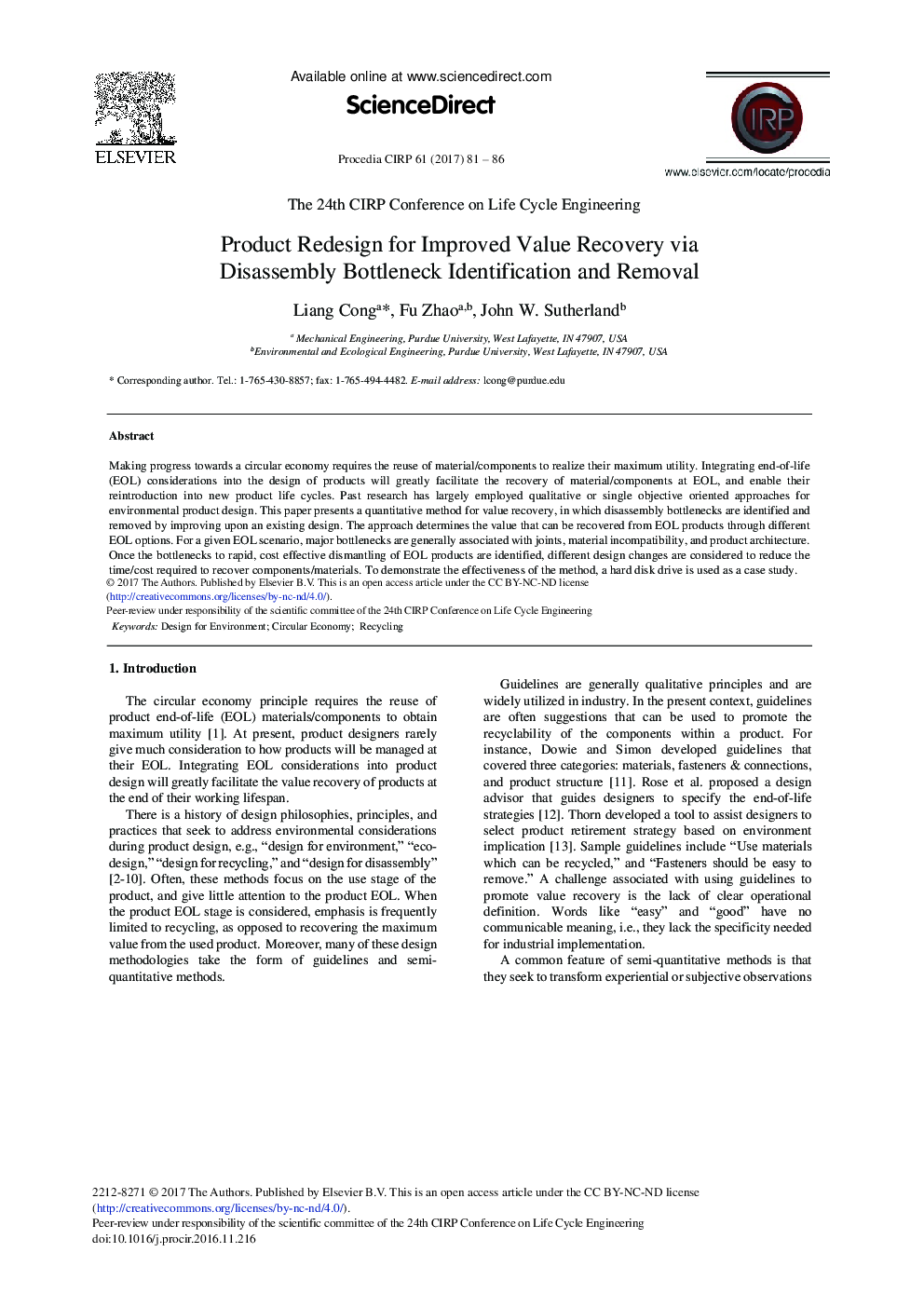| Article ID | Journal | Published Year | Pages | File Type |
|---|---|---|---|---|
| 5470484 | Procedia CIRP | 2017 | 6 Pages |
Abstract
Making progress towards a circular economy requires the reuse of material/components to realize their maximum utility. Integrating end-of-life (EOL) considerations into the design of products will greatly facilitate the recovery of material/components at EOL, and enable their reintroduction into new product life cycles. Past research has largely employed qualitative or single objective oriented approaches for environmental product design. This paper presents a quantitative method for value recovery, in which disassembly bottlenecks are identified and removed by improving upon an existing design. The approach determines the value that can be recovered from EOL products through different EOL options. For a given EOL scenario, major bottlenecks are generally associated with joints, material incompatibility, and product architecture. Once the bottlenecks to rapid, cost effective dismantling of EOL products are identified, different design changes are considered to reduce the time/cost required to recover components/materials. To demonstrate the effectiveness of the method, a hard disk drive is used as a case study.
Related Topics
Physical Sciences and Engineering
Engineering
Industrial and Manufacturing Engineering
Authors
Liang Cong, Fu Zhao, John W. Sutherland,
